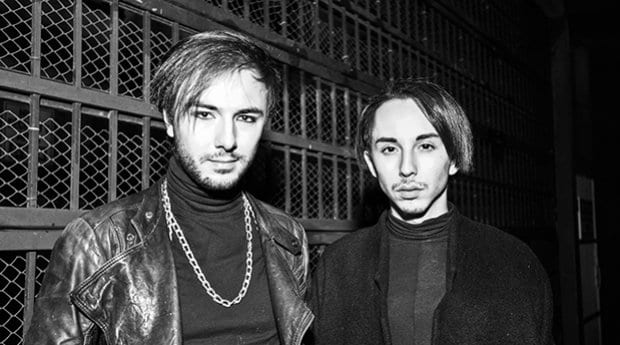As Vancouver Fashion Week (VFW) showed for the 13th year in September, the city has not completely evolved past its fitness-wear-chic signature style — after all, one of the most popular shows was a new yoga line, called Lotusactivaa, from Real Housewives of Vancouver star Mary Zilba. But VFW has certainly come a long way from its 2006 season, when organizers worried they’d have to pull the event after securing only four to six designers.
This year, VFW hosted designers from 25 countries, including Italy, France, Brazil, India and Russia. Under an enormous white tent at the Queen Elizabeth Plaza, VFW provided a sweeping 90-foot runway with seating for 720 people. Spearheading VFW’s evolution into an increasingly relevant showcase of Canadian and international fashion are local gay designers, including 22-year-old Evan Clayton, who, for his Death Proof collection, paired his macabre allure with prints by artist Kat Thorsen and enlisted drag queen models he’d met in Vancouver’s underground.
“The great thing about Vancouver’s underground scene is that because it’s small it’s really concentrated, which I find very inspiring and exciting,” Clayton says. “I was so excited to work with Jane Smoker, Valynne Vile and ThanksJem last season. They were people I’d seen out countless times at underground East Van parties.”
The success of Death Proof saw Clayton receive the inaugural Nancy Mak Award, given in memory of the late Mak, one of VFW’s founders. The award included a plane ticket to Austria, where Clayton presented Death Proof at Vienna Fashion Week.
Clayton’s success has made it increasingly clear that if Vancouver’s fashion scene is growing, it’s thanks in part to seeds planted in East Van — the “zeitgeist” of Vancouver culture.
“There’s truly great gay artists [emerging from East Van] who are pushing boundaries of fashion and pushing Vancouver’s buttons,” Clayton says.
Evan Ducharme, another local young gay designer, agrees. “Lucrative brands are looking to Vancouver now not only because of the Asian market, but because East Van has become a catalyst for trends,” he says. “The most exciting things that are happening in the city are happening east of Main Street.”
As East Van’s cultural pulse quickens, some say gay men are driving the changes. “It’s a part of the legacy of gay culture that we’re trailblazers,” Ducharme says. “It’s always happened, but it’s especially present right now with all the great work being done in the East Van community.”
With affordable workspaces and a thriving community of fashion enthusiasts, East Van is the perfect platform for emerging designers. “In the past year, I presented my own show without the help of one of the governing bodies of fashion, like one of the fashion weeks. I did it with my own connections I’ve met since I started working out here,” Ducharme says.
His collection, inspired by the camp of Norma Desmond filtered through a dystopian New World Order, was shown at East Van Studios. Buzz from the show led to Ducharme designing for Once Upon a Time actress Lana Parrilla, whom he has dressed for film festivals and premieres. Ducharme says that if Vancouver’s film industry continues to thrive, so will its fashion.
Jason Matlo, an established gay Vancouver fashion visionary whose house recently celebrated its 10th anniversary, says that he has been “sashaying through this existence without any barriers” in part because of his astute ability to compromise.
“I’ve had to modify my aesthetic,” he says. “You have to really strike a balance between creativity and commerce. If I could design anything I want and didn’t have to worry about selling to customers, I’d probably be designing a very different line of clothing.”
Though his elegant and classic designs tend to skew toward a distinctly “uptown” customer profile, Matlo pays attention to what, and who, is developing on the streets of East Van. “I keep a very close eye on that scene because that’s where I get the most inspiration,” he says.
Matlo acknowledges the growth in Vancouver’s fashion scene since he launched a decade ago but says he would still advise ambitious young designers to move to bigger markets. If they do remain in Vancouver, he suggests they mould their lines to create collections that will appeal to Vancouver consumers’ appreciation for practical pieces over innovation.
While young designers like Clayton and Ducharme may find more opportunities for success in outside markets, the only hope that Vancouver’s runways will reach a global scale comes from the devotion of our local fashion queens.
“The gay community pioneers any fashion scene,” Matlo says. “Right now the big trend is that gay guys look like straight men, and straight men look like gay guys three years ago.”

 Why you can trust Xtra
Why you can trust Xtra


